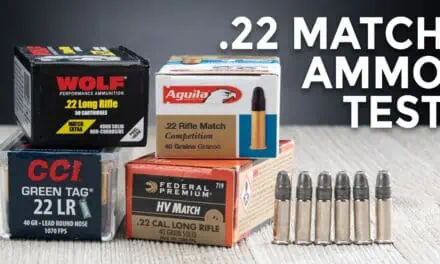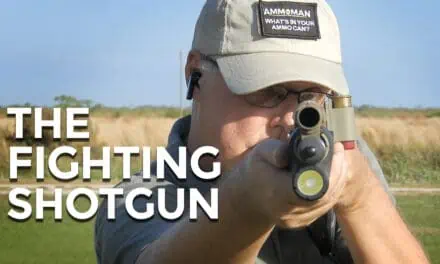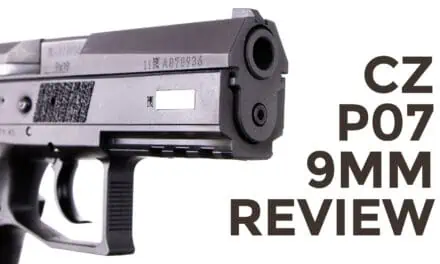It’s a simple question: Do suppressors reduce recoil? Generally speaking, suppressors can help reduce recoil from a pistol or rifle.
However, there’s more than meets the eye behind the answer. Let’s break down exactly how suppressors effect recoil when used with a rifle.
If you want a more technical explanation, I interviewed Robert Higgins, who runs the day to day operations of Witt Machine & Tool Suppressors. Click the video below to see what Rob has to say about suppressors and their ability to reduce recoil.
Suppressor Recoil Reduction: Urban Legend or Scientific Fact?
The answer to whether or not suppressors reduce recoil lies somewhere in the middle. Different suppressors may reduce more or less of the recoil from a rifle because of a variety of reasons we’ll discuss. It’s hard to give a resounding answer, but in general suppressors DO reduce recoil. How do they accomplish this?
The main reason suppressors may reduce both actual and “felt” recoil is a combination of the weight of the suppressor, as well as the design of the baffles and whether or not the suppressor features a muzzle break at the end. All three of these design principles play a significant role in whether or not a suppressor will reduce recoil at all.
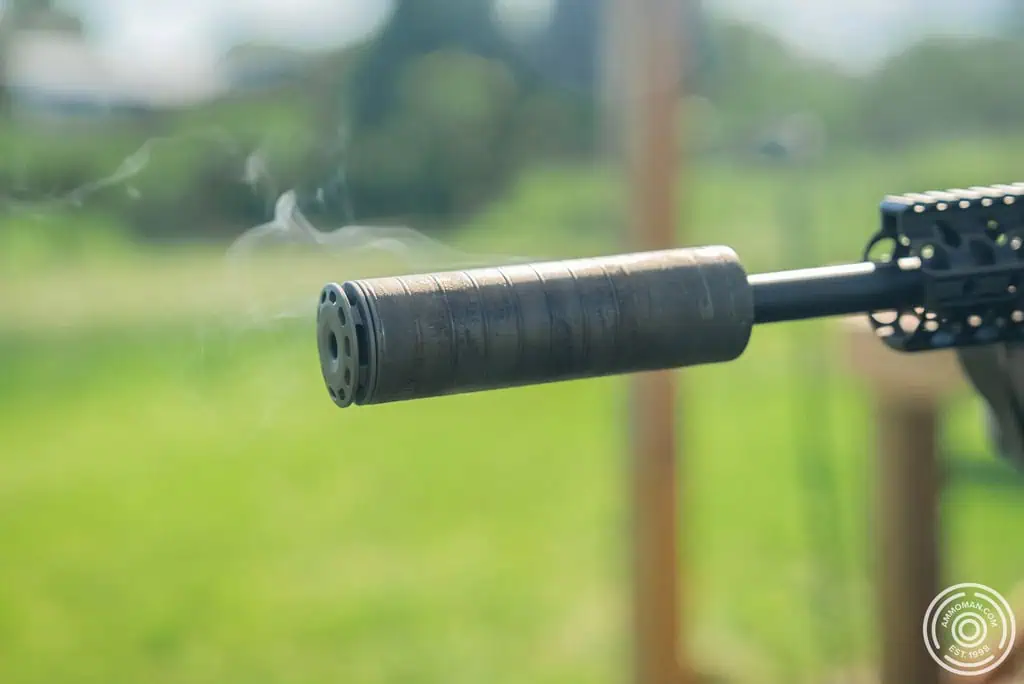
The muzzle device as end cap of the suppressor helps to reduce recoil.
In order to more fully answer whether or not suppressors reduce recoil, we have to acknowledge two categories of testing: Felt Recoil, and Measurable Recoil.
Felt Recoil
Felt recoil is the individual’s subjective impression of how much the gun “kicks” or moves during the firing process. Every person will have a different felt recoil from one to another. Stature, muscle mass, shooting form, and sensitivity to noise all play into what makes a rifle “feel” like it has a lot of recoil. And of course, the cartridge size!
Size Matters
For example, rounds like 5.56×45 unsuppressed are very loud, but funnily enough, they have far less recoil than some handguns. Larger cartridges like .308 will have significantly more felt recoil regardless of technique used.
Measurable Recoil
Measurable, as the name implies is far less subjective. If you wanted an easy way to get measurable data on the difference of recoil both with and without a suppressor, you could do some high-speed camera testing and a little bit of basic math and plot out a decent comparison.
Baffle Design
We’re going to leave to high-speed camera at home for today and focus on what we know to be true: Suppressors with baffle designs that draws the air out as the bullet passes through will keep the gun steadier so long as it is tuned to the rifle.
Heavy Suppressors Help Reduce Recoil
If you’ve ever shot a precision rifle, you would quickly notice how much heavier they are. From the chassis, to the barrel and yes, even the suppressors. The main reasoning behind this is to keep the system weighted to fight recoil and keep the shooters eye inside the scope glass to watch the trail and impact of the shot. Weight savings isn’t usually a priority as accuracy is the “aim” of the game.

Precision rifles tend to be quite heavy, in order to keep the rifle steady.
The same is true for your medium caliber rifles too. If you are shooting a rifle free-hand, you will notice how much less your muzzle rises with a heavier suppressor as apposed to a lightweight one. Balancing the overall weight and proper tuning of gas will give you the best of both worlds!
Tuning Your Gas Properly For a Suppressor
Tuning your gas system is something you may not need to do to ensure your rifle functions with a suppressor. However, it would greatly increase the longevity of your rifles internal parts and also give you a much more pleasant recoil impulse.
Suppressors “Kick” More on Gas Operated Guns
In some cases you may feel like your rifle is recoiling much harder with your suppressor than without. If what I’ve talked about so far is true, then how could this be?
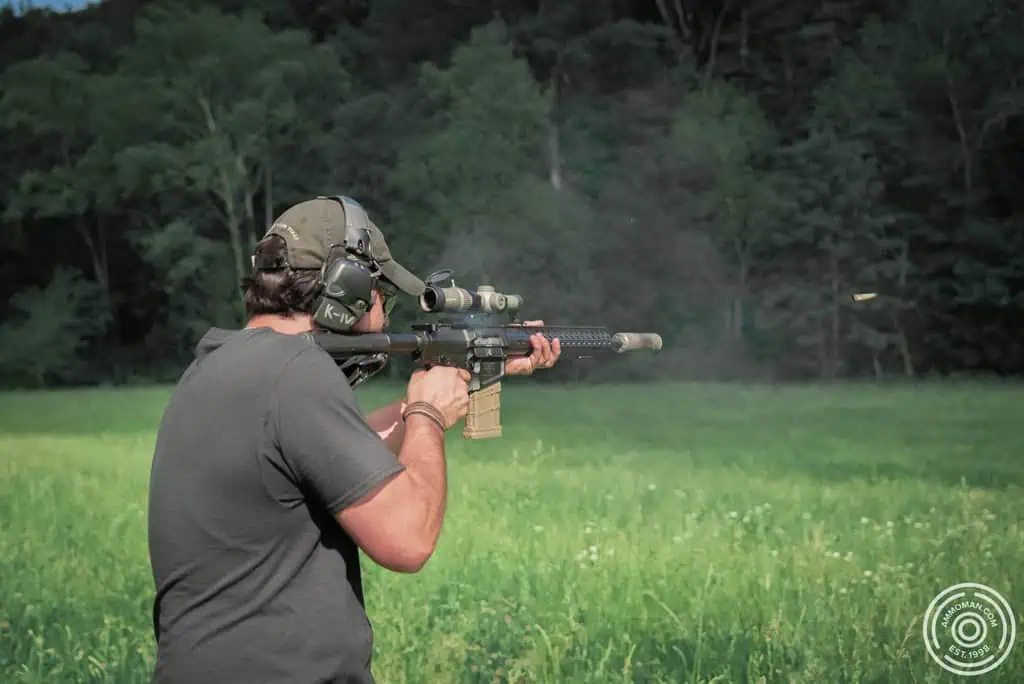
.308 AR10 recoil with a lightweight titanium suppressor.
No, you’re not going crazy. One thing people may not realize at first is that when you add a suppressor to your barrel, it is trapping all of those gasses that would otherwise be exiting the barrel following each bullet. Depending on your silencer, your barrel length, and a host of other factors, you could be sending a lot of those gasses back into the operating system and towards yourself.
This results in a few things:
- Sends hot gas back into your face, causing irritation.
- Is much harsher on the cycling system.
When you are sending that much more gas back during cycling, you will definitely notice how much the recoil impulse has changed/increased.

Back-pressure is increased when shooting with a suppressor.
What Do Suppressors Do?
The main way a suppressor achieves the goal of making a shot quieter is by slowing down the hot gasses that follow a shot and by cooling them down. That heat and speed is where the loud “boom” comes from when you shoot. There are a few different ways manufacturers slow and cool these gasses, but they all pretty much follow the same design principles. You will most commonly see stacked baffles inside a metal sleeve that re-route and manipulate the gasses in the way that slows down and cools them as they exit behind the bullet.

.308 exiting suppressor.
Conclusion
I hope I was able to answer your question and explain some of the nuances of whether or not suppressors reduce recoil. At the end of the day, just be aware that there are a lot of factors for getting a suppressor that maximizes recoil reduction. If that’s your goal, I recommend finding the balance of a good barrel length, focusing on the tuning of the gas system, and of course choosing a well liked suppressor!



